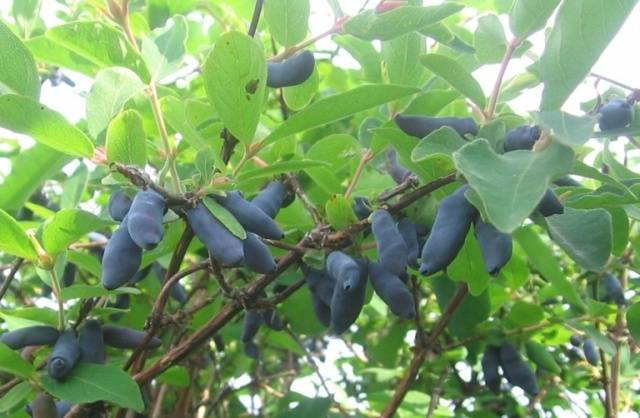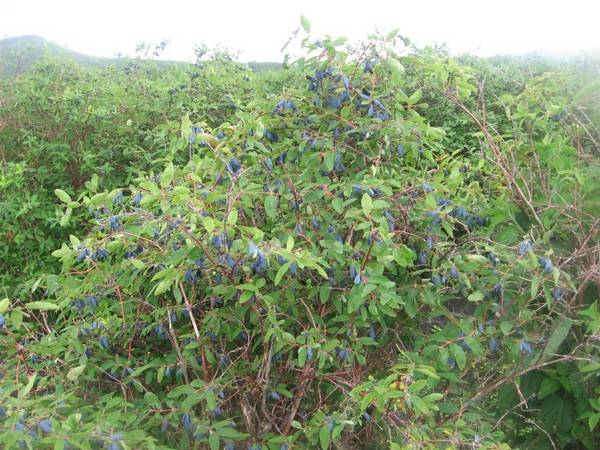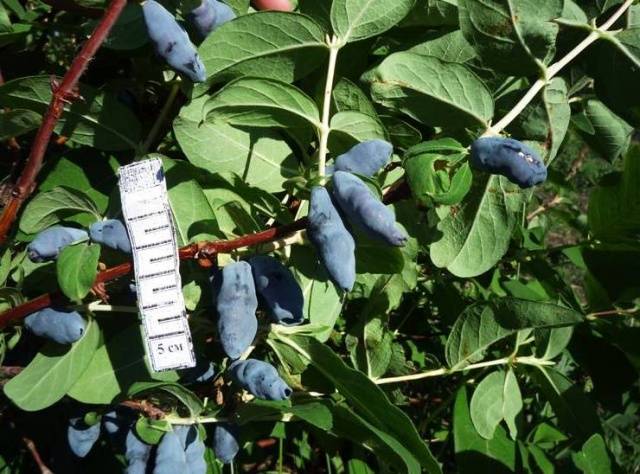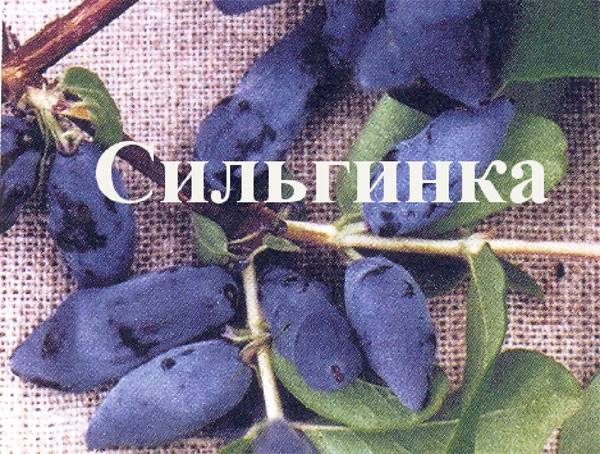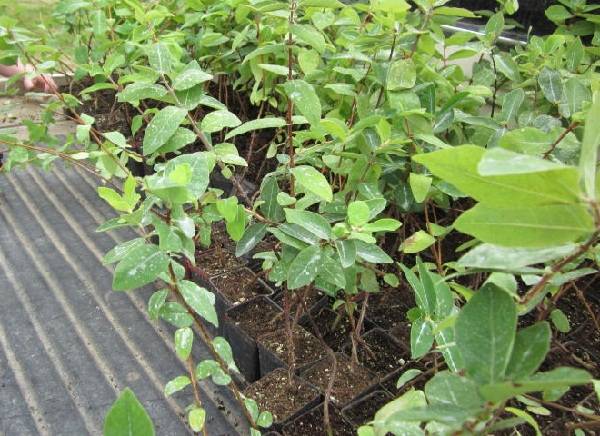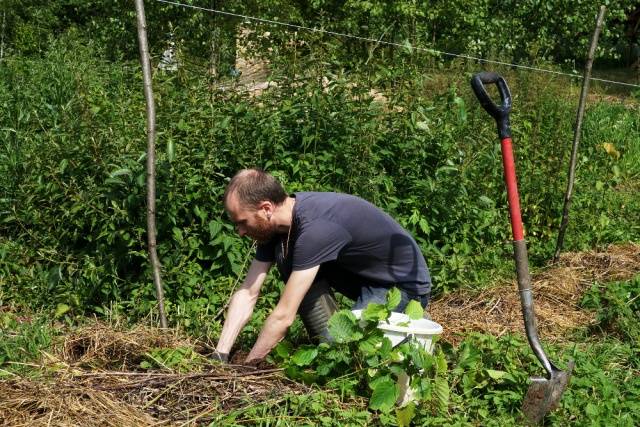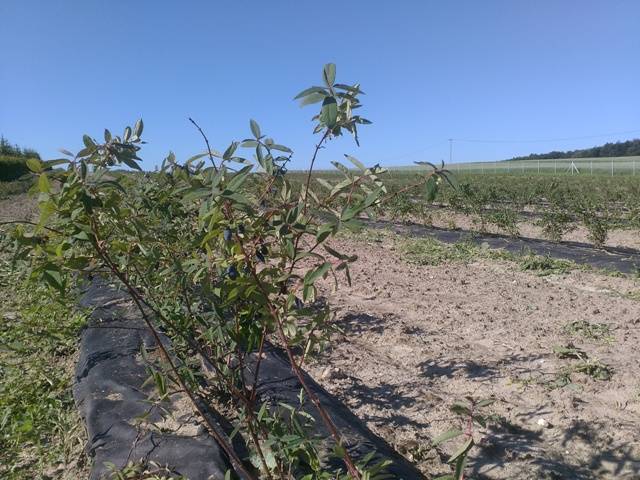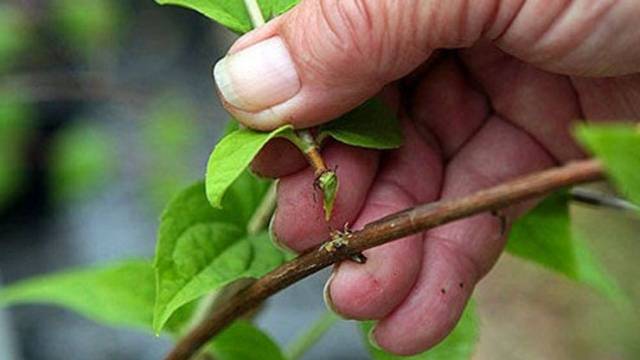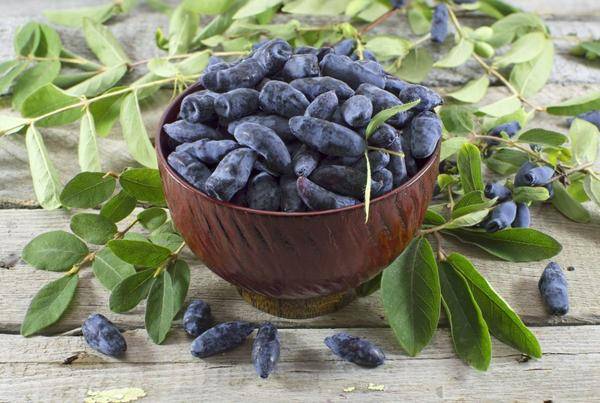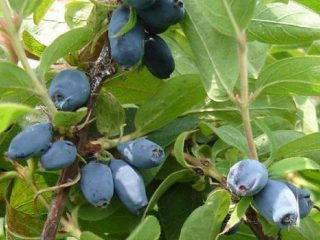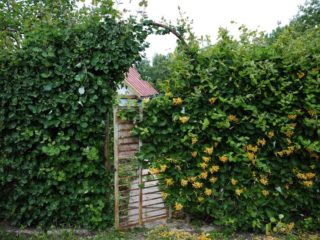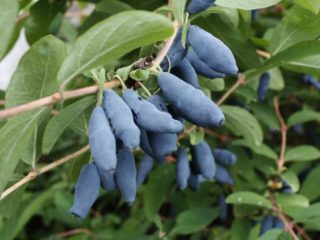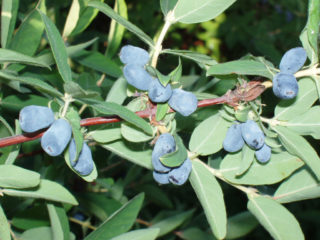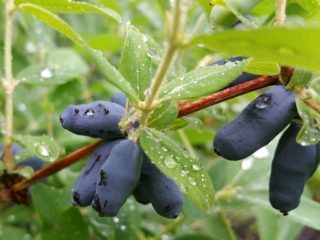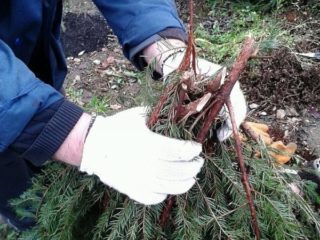Content
The healing properties of edible honeysuckle species have been known for a long time, but until the middle of the last century they were rarely planted in gardens due to their sour-bitter taste and small fruits. In addition, the berries ripened unevenly and immediately fell off, which is why most of the harvest had to be collected from the ground. Beginning in the 50s of the 20th century, Russia began to actively develop cultivated varieties of honeysuckle.
Description of the variety
Silginka was created in 2004 by the Federal State Unitary Enterprise "Bakcharskoe" by hybridizing Turchaninov's honeysuckle and the Roxana variety. In 2011 it was included in the State Register. Now cultivars are being developed so intensively that Silginka is no longer considered the newest variety.
Specifications
The honeysuckle bush of the Selginka variety is medium-sized, no more than 1.5 m high, about 1.2 m wide. Rigid straight branches form an oval crown of medium density. Mature bark peels off, which is typical of all edible honeysuckles.
The fruits, weighing 1.0-1.4 g, are elongated-oval, with a pointed apex, reach a length of 3.5 cm, and up to 1.5 cm at the widest point.For honeysuckle, this is considered a large size, although it cannot be compared with the Bakcharsky Giant or Daughter of the Giant varieties. The yield of an adult bush is about 2.5 kg, up to 8.2 tons are harvested per hectare, and in a particularly favorable year - up to 11.5 t/ha.
Silginka is considered one of the most delicious and sweet cultivated varieties of honeysuckle - its tasting score is 4.9 points. The dark blue, coated one-dimensional berries are aromatic, the ripe pulp is tender and juicy. The transportability of the fruit is good.
Silginka is an early shedding variety (more than 30% of the fruits fall off after ripening). The berries are easily separated from the branches and can be collected manually by shaking them. To do this, lay a tarpaulin or oilcloth under the honeysuckle and shake the bush. Since the harvest ripens together, mechanized harvesting of slightly unripe berries is possible.
Pollinators
Like other cultivated honeysuckles, Silginka is self-sterile. To obtain berries, several other varieties must be planted nearby, otherwise abundant flowering will only attract bees to the site. Silginka is not picky about the choice of pollinators, but the best results will be obtained by planting next to honeysuckles such as Delight, the Giant's Daughter, Yugana, and Bakcharsky Giant.
Advantages and disadvantages
The main advantage of Silginka honeysuckle is the taste of the berries - sweet, aromatic, absolutely devoid of bitterness. Farmers and amateur gardeners are also attracted by:
- Early maturation.
- Large fruit, one-dimensionality and convenient placement of berries for harvesting.
- Resistance of Silginka honeysuckle to frost, heat and drought. This makes the variety suitable for growing in regions with different climates.
- Harmonious ripening, one berry picking is enough.
- Silginka honeysuckle is suitable for processing and freezing.
- Mature plants produce a harvest annually.
- Low requirements of honeysuckle for growing conditions.
- Durability - each bush can fully bear fruit for 30 years.
The weak points of the Silginka variety include:
- Severe berry shedding - more than 30% of honeysuckle fruits fall off after ripening. This makes mechanized harvesting difficult and is inconvenient for growing in dachas, where the owners appear from time to time.
- Self-sterility - this drawback is inherent in all edible honeysuckles today and does not make it possible to plant only one variety.
Accommodation on site
Honeysuckle grows best in temperate climates. There, when properly placed, it almost does not react to unfavorable factors. The closer to the equator a plant is planted, the more careful care should be taken. Honeysuckle variety Silginka has shown itself well when grown in the south.
Selection of planting material
It is best to buy seedlings from trusted garden centers or nurseries. The time for planting honeysuckle is late summer or autumn. In the spring, you can only do emergency moving of bushes to another place with a lump of earth.
The best material for planting is 2-3 year old plants with several straight branches and equal internodes. Peeling bark in lignified areas is not a sign of disease. For honeysuckle with an open root, you need to carefully inspect it - there should be no severe damage, rotting or black areas.
Selecting a suitable location and preparing the soil
To successfully cultivate honeysuckle, you need a sunny area protected from strong winds. Moisture and cold air will accumulate in the ravines, and the plant does not like this. Any honeysuckle soil is suitable except sandstone - it is impossible to get a decent harvest there.
The best time for planting is late summer or early autumn, when growth processes slow down, but do not stop completely. Then, before the onset of cold weather, the honeysuckle will have time to take root and begin to grow in the spring - this will allow it to begin bearing fruit a year earlier.
There is no consensus on the honeysuckle planting scheme; maintaining a distance of 1.5 m between bushes and 2 m between rows is considered standard. During mechanized harvesting, plants are placed closer to each other, and the passage is made large so that equipment can pass freely without breaking off fragile branches.
They dig holes measuring 40x40x40 cm, and prepare the soil for planting honeysuckle depending on its fertility. What quantities of additives need to be added can be seen from the table.
The soil | Organic matter (compost, humus) | Superphosphate, g | Potassium salt, g | Additional Additives |
Chernozems | Up to 1 bucket | 50 | 50 | — |
Poor land | 2 buckets | 150 | 50 | — |
Acidic soils | 1 bucket | 50 | 50 | lime or dolomite flour 0.5 l |
Sandstones | 2 buckets | 50 | 50 | — |
Clay areas | 2 buckets | 50 | 50 | — |
On the eve of planting, the hole is filled with water. A mound of fertile soil is poured in the center, around which the honeysuckle roots are carefully spread, the neck is buried 3-5 cm. The earth is carefully compacted, the bush is watered abundantly, and the tree trunk circle is mulched.
Growing honeysuckle
The plant does not need special care. In a well-chosen place, with proper planting, only young bushes need close attention.
Caring for a young plant
Young honeysuckle after planting first of all needs sufficient watering. The soil should not dry out, but water stagnation at the roots should not be allowed. The next day after moistening, the soil is loosened to a depth of about 5 cm - this will increase the flow of oxygen.
In the first years, honeysuckle hardly grows green mass - the root system develops first. The tree trunk circle needs to be mulched and prevent the occurrence of weed. In autumn, dry and broken branches are cut off.
If organic matter and a sufficient amount of fertilizer were added to the soil during planting, honeysuckle is not fed for 2 years in summer and autumn. Early in spring, a bucket of water with urea or ammonium nitrate, diluted according to the instructions, is poured under each bush.
Caring for an adult plant
Adult honeysuckle is watered as needed, and the trunk circle is loosened. In spring, plantings are fed with nitrogen, and after fruiting - with a complete mineral complex. In the fall, it is useful to add a bucket of organic matter and a jar of ash under each plant.
All work must be done carefully so as not to break fragile branches.
Pruning and wintering
Until the age of 15, only sanitary pruning is carried out on honeysuckle - dry, broken and thickening shoots are removed. Then the old skeletal branches are removed, and at 20, if the yield has dropped, the entire bush is cut off at a height of 15-20 cm. In the spring, it is completely renewed and produces berries for up to 10 years.
Silginka honeysuckle was bred in the Tomsk region and easily tolerates frosts of 50 degrees, the flowers do not fall off at minus 7.
Reproduction methods
Honeysuckle propagates easily. This is one of its advantages - planting material is not cheap. Amateur gardeners can divide a young, overgrown bush or dig in cuttings. This method of propagation, like seed, is of interest exclusively to breeders - cross-pollination does not allow young plants to inherit varietal characteristics. Of the green and lignified cuttings, at best 20-30% survive among amateurs, and then only with proper care.
Problems during cultivation
Honeysuckle is considered one of the most problem-free berry bushes. She rarely gets sick and is attacked by pests. Plants can be annoyed by:
- aphids;
- leaf rollers;
- willow scale insects.
They are fought with insecticidal preparations or biological agents, such as Agrovertin or Fitoverm.
In rainy summers or during evening watering in cold weather, powdery mildew may appear on the leaves. The bushes are treated with a fungicide, and Fitosporin is used from biological products.
Reviews
